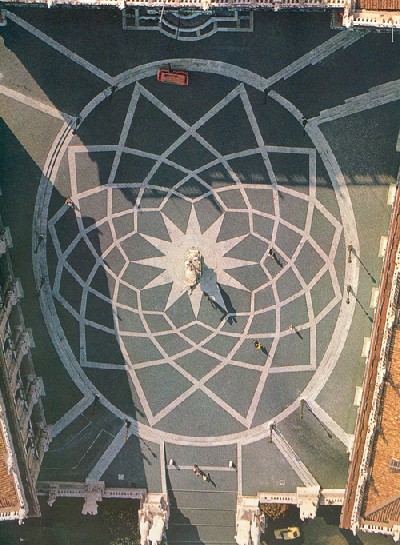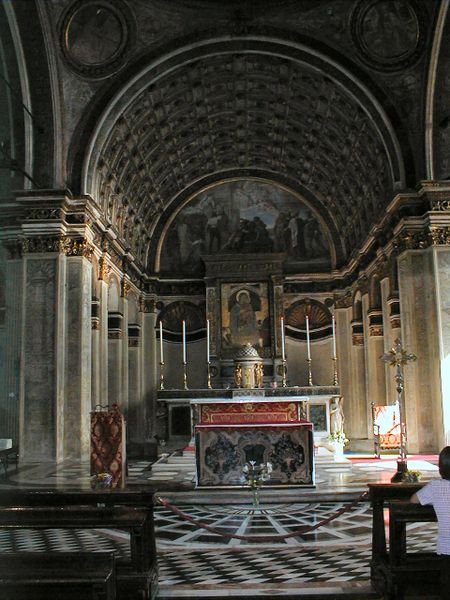The majority of people in the past or even in the present, they do not pay much attention to architecture or arts . Even if it had been a great deal and significant cause of how people, countries, and revolution of each movement that may not seem to link back to architecture such as political matters as well as representation of stage of each country.
As I began my statement on the majority of people who did not noticed or even aware about art and architecture that surrounded changed their way of lives and environment because I felt that we are at least, fortunate to learn that each object and pretty much every single things began with "thinking" and how people looked toward or using architecture in totally different perspective and purposes. As we got into deeper historical theories, we could see that people tended to used the object or building and theories to improved their lives and resources that available as well as technology that was actually invented to their lives and how we wanted to represented ourselves. The most important qualities that prominent architects certainly have is the skill of persuasive talking as well as how they approached toward history and combined or opposed and breaking all the rules was set. I wanted to focus on the matters of each masters from different times learned from different period of architecture movement and then appoarch or reacted differently.
Architecture for me now is something that is totally fascinating in terms of the roles that it played through out the past as well as the way "architects are capable to invented a new technologies and how they have slightly shaped the world by what they are doing. The way that they grow out to our time and scope is so intriguing as well. If we looked back to Greek where they invented was building the temple was open and unhabitatable and then followed the Romans where they built all the temple that closure and invented more on decorative elements and the succession of building a dome. They obviously learn from the greek from the notion of the shape of columns, order, and hamonious number. After Romans we have Romanasque, gothic, Ranaissance, and Barouqe respectively. All the movement that I menetioned are all catagorised in classical time.
I would like to start with Ranaissance because they were obvious learning from history and adapting the medthod to suit their time and light up their innovative in term of technologies. They also the first movement in classical that really using architecture to go with the term of "humanism" The prominent architect in this period is Brunelleschi who was took for granted for a long time. If we asked people if they know Brunelleschi they would go blank but if we mention someone like Michelangelo, palladio, and Leonado Davinci. They would totally understand to whom we referred to.
As I being strengthen on Filipo Brunelleschi because he was kind of a master of Bramante, Michelangelo, Palladio, Leoando Davinci. They all learned from Brunelleschi and adapting into their style. Brunelleschi was one who completed the dome of Duomo in Florence. He was not trained to be an architect but the gold smith but his interest was on the building so he took a trip with his friend to Rome. Rome at that time was pretty much more ruins than ruins that we see nowadays and he learned this medthod of building the dome in Duomo Florence from Pantheon in Rome. He also famous on his innotive thinking of how to transport the materials.
As we can see, from the Duomo of florence, Renaissance in early period was learning the medthod of building up from Roman and still have some sense of decorative elements that was influenced from previous period which is gothic.
 |
| Duomo Florence, Filipo Brunelleschi. Showing that Ranaissance learned form Roman and follow Gothic. |
|
After, Ranaissance we have Baroque which was so influential by Michelangelo as well as brunelleschis' work as well as medthod. We can draw the link two of this movement easily because Michelangelo who was considered to be in late Ranaissance was considered to be "mannerism" as well because of his work was so expressive and heavier than any other architects or artists in that period. Baroque this impression of how architecture and could be a the shape is not circle follow by sqaure as well as how they also expressed the truth in form of sculpture. The best example of works in this period would be "David by Bernini" and "San Carlo alle Quattro fontane, Boromini".
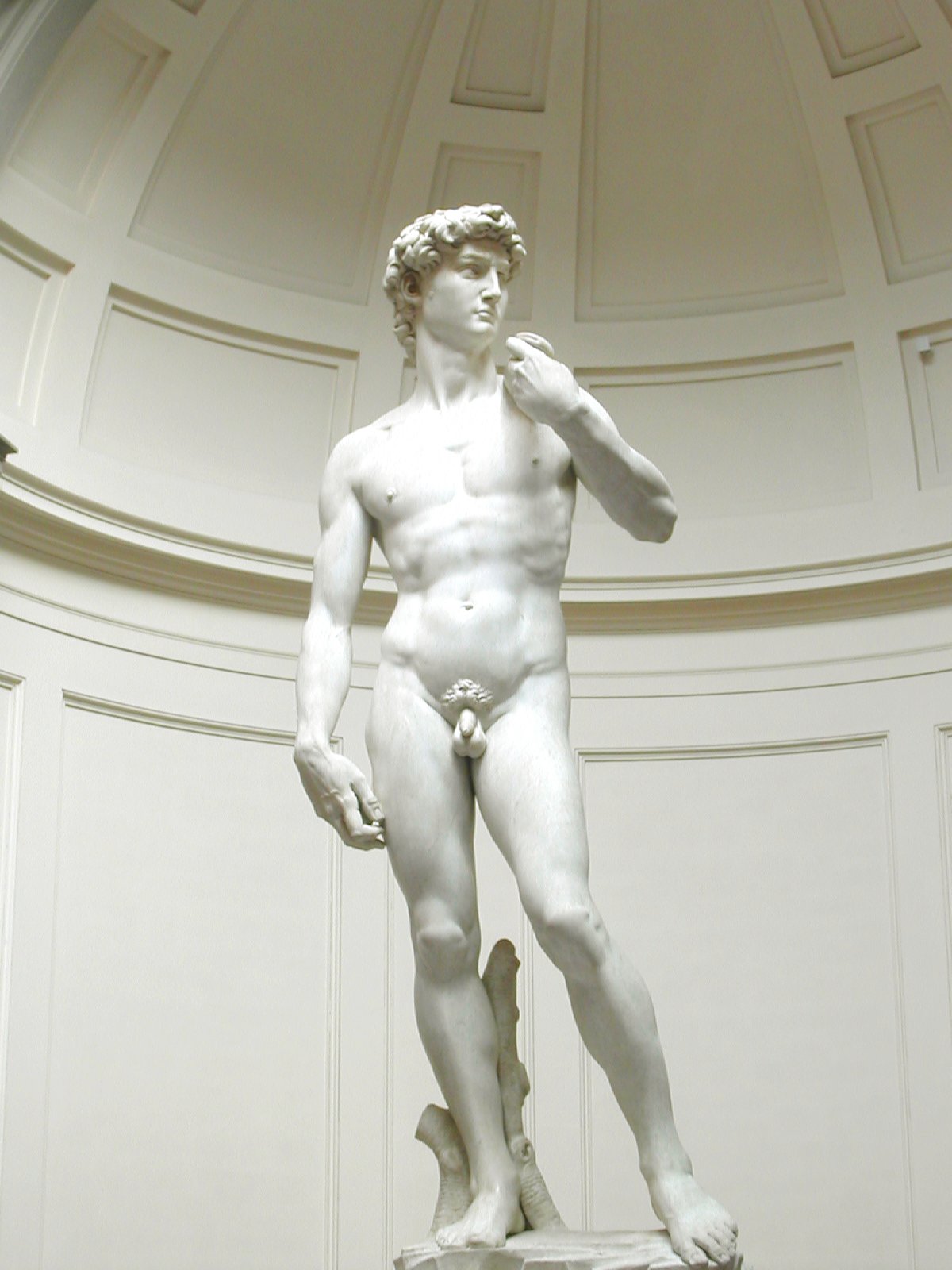  |
| David, Michelangelo David, in the eye of Bernini |
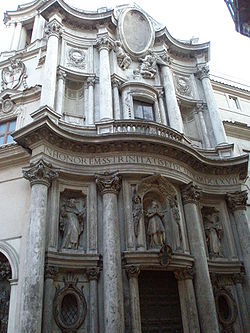 |
San Carlo alle Quattro Fontane, Boromini. Curves on facade as well as decorative elements.
|
As we can see from all above movement, the architecture was still mostly pertain to temple and god even if they was concerned about "Humanism" and the expression of truthfulness. Those movement also followed one another in a way that we can still see some sense of previous movement that still showed in some perspective on their works. However, after classical period which was Neo-classical and then Modernism where they totally broke away and rejected history, however, interestingly, we will see that they also learned from history but they just using it differently from the all above movements that was mentioned before.
Modernism was in the right time which is the war world time and how their concept fitted with the situation that happened.The initial idea of modernism is about "Humanism", the human right of how every man should be treated and live equally so no more all decorative that was not necessary and those materials that was not industrialized because the honest simple man cannot effort that kind of things. It sounded so great at that hard time when people was strive for freedom and equalities in society. However, diversely modernists overlooked the notion of context and the very word which people love the most
"Freedom".
In early period, they set so many rules in their theories toward architecture till architects and artists seemed to distance themselves from each other. For example, the founder of Bauhaus, Walter Gropius, who was so obsessed with simplification and architecture should be clean " in term of no decorative items and painting" that how he defined his view of perfection toward architecture. And We could not forget to mention three of these guys that really changed our perception toward art and architecture in this movement which are Le Corbusier, Mies Van De Rohe, and Louis I Kahn.
Both of them still in the stage that people admired and being critical because they expressed their perception toward the subject of architecture in a clear and actually developed their concept of changing from the past and fit with the current situation and willing to bend a bit for the pleasure to the eyes.
Start with Le Corbusier who had this idea of "Golden ratio" that measure the proportion of man and apply that logic to the building. We are familiar with the logic that they used man's proportion to referred as measuring tools, we can started from Vitruvius <modular man>, Palladio <golden mean proportion>, and finally Corbusier <Golden ratio>. We can the development that the first two was using man's proportion as a scale to measured that the building was lean towards god and exceed the size of man. Even if in Palladio time, they started to break the rules about order and concerned on matter of humanism but they still used the same logic of scaling. So Le Courbusier learned from them and then developed his theory about "
Golden ratio" which using man's proportion to build units of building so the scale is for human not for any god. However, his flaw was how he thought that human from different background and context can fit in his theory of utopia which was totally in my point of view because we are strive for power, revolution, anything better for us even if we only need his theory about "living effienciently in the boxes under one single roof". However, he besided that point we could not denied that Corbusier was and still one of the most architect that had this idea of "urbanism" and architects, nowadays, doing the same thing with most of condominium because of the limitation of the spaces as well as economical matters.
 |
| The Modular, Vitruvius |
 |
| Golden mean proportion, Palladio |
 |
| golden ratio, Le Courbusier |
Second architect, Mies Van De Rohe, who was actually made all the theories of modernism made sense to me because he was one who was influential in this movement and he broke the rules that modernism set to fulfill his sense of aesthetic between architecture and art as well as architecture that has austere decoration. His work also remind me of how greek temple look like columns, slabs, and unliveable. He was so famous in America among others architects in modern movement after the world war 2. In my opinion, he was a man who happened to be in right place, at the right time, and of course had the right concept for that time being. After American won world war 2, they were arrogant, they wanted to show that they are powerful, they had better technologies than others, they had this idea of industrialization on nuclear and machine made materials and obejects. As we all know as an architecture students, Mies is a god of details in his way of using materials and his two major use materials were I beam and glass. He was also well-known with his quote " Less is more" which I think totally hit off americans because they won over Germany where Hitler was preffered architecture that showing off his power by using all the decorative elements and the scale that one would be scared before they got to his office <The New Reich Chancellery, Designed by Albert Speer>. So Mies's architecture was perfect using machine made materials and importantly was totally different kind of architecture that Hitler would chose.
 |
| The New Reich Chancellery |
However, the significant thing that Mies did was how he would broke the rules that modernism was setting represented themselves if necessary. He would used his obsession on materials, on its texture and his way of exposing the materiality's. And this is so controversial matters for Modernism because their architecture would have to be plain and use no decorative elements at all as well as it should be effort able. Nevertheless, we did see that Mies did not care about that matters much when it comes to his way of using materials and details. We can see that contradiction in his most recognized building, Seagram building and Farnsworth house. In case of, Seagram he was dealing with big scale building so couldn't be able to use I beam to support all the load of the structure as well as how he wanted to hidden the concrete so people from the outside would see only I beam and a glass box. For Farnsworth the structure was working because the load was much lighter, however, his concerned over harmonious and the details to serve his purpose to make the house look as if it's floating, cause tons of money which working class would only dream of having.
If we really took the side of opposition on this matter we would pick on loads of flaw in his works. How people who was not into architecture and art would not understand that the cause cost a multi-million dollars to save , it's only white glass box. Nevertheless, as an architecture student I appreciate his creation and the way he push his architecture to the level that others modernists did not which is "Expression", that he did with his own style which by using the materials itselves to do that job for him rather the painting.
 |
| farnsworth house |
 |
| Greek temple |
The last person in this movement that I think worth mention is Louis I Kahn who actually make me find it hard to believe that people at that certain time would not recognized or admitted his works because he was not following what they were doing. We could not denied that Louis I Kahn is in between people and I don't think I can put him in any -ism. He learned from modernist and was modernist but realized it was not for him so he took trip to see the ruins in Europe <Italy> learned from them but
in a way of open minded modernist would do, I suppose. He did not copy the elements but learning on the shadow and how each materials effect people and context. He was back to America and got first commission in Yale gallery and continue to work his way of using what he learned from the past adapted to what the present world were about. In my opinion, he was good enough to even compare to the master in Renaissance time "Brunelleschi" who was using the same method of learning and adapting. Unfortunately, Kahn only had 10 years to created his architecture before he passed away. He did not have an oppotunity to see his masterpiece of architecture that he built in Bangladesh.
 |
| Yale art gallery |
 |
| the sketch from europe before he built "Yale art gallery" | | | |
|
|
|
|
|
|
 |
| national assembly building in dhaka, bangladesh |
As I mentioned earlier, we are wanting something more because of we are human. We believe in "Freedom" so there was another movement that go against modernism called
"Post modernism" In early time, thier architecture were practically there to say "I am not symmetry so I have decoration elements so I am not Modernism". After that it started to make sense on "Both and" from Robert Venturi that he would preferred functional space as well as the place that have the quailty of aesthetic, the place that have to be more than glass box. Post modernism has a lot of impact on me in term of going totally extreme as well as going to history and learn from them. Interestingly, there are also two groups of people which referred as "The Gray" and "The White". They had this same impression of viewing architecture as a sign so that is maybe why people group them in the same -ism. The Gray would have the leader as Venturi and The white would be Peter Eisenman. The white learned from modernism and attack them by using the theories of breaking and most important is the notion of
"Function follows form". On the other hand, the gray would also learned about modernism and attack them by breaking but combining classical and modern architecture together.
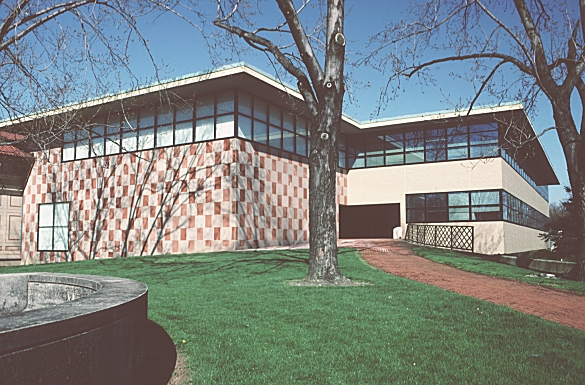 |
| Allen Memorial Art Museum, Oberlin College, Robert Venturi |
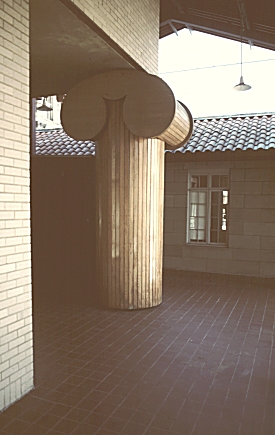 |
| detail of iconic column. |
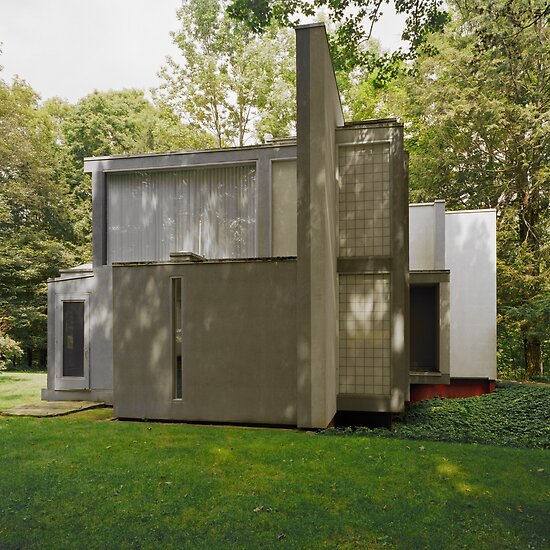 |
| House vi, Peter Eisenman |
 |
| view between two intersection "stairs" |
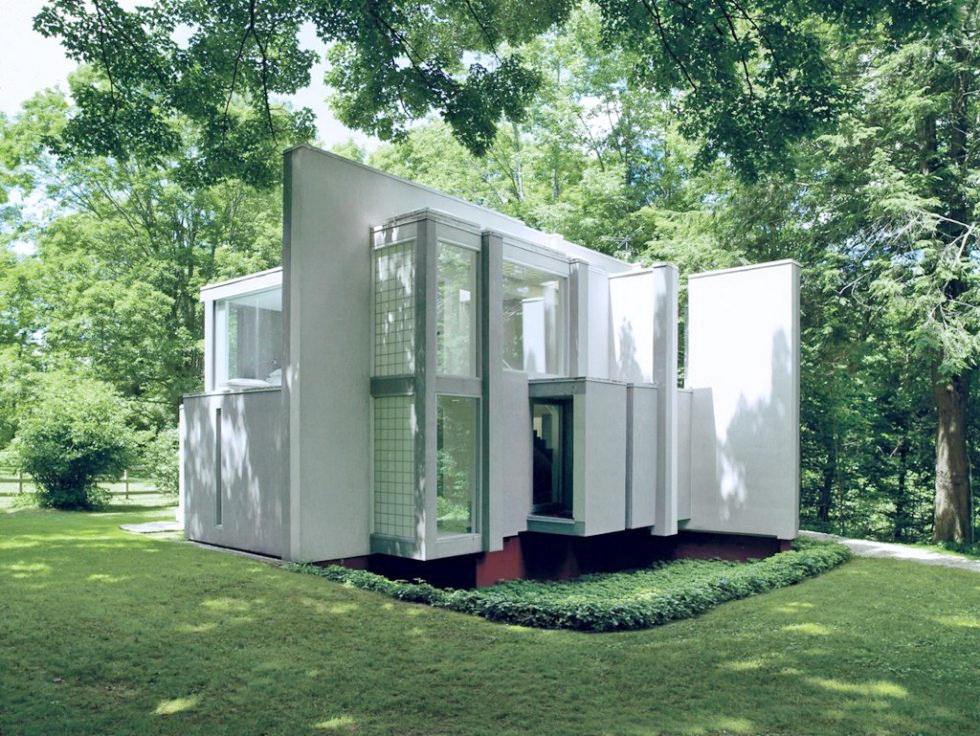 |
| floating "columns" and seperate beds. |
The reason that I am so into this movement because their extremist of believing in their method and pushing architecture into another levels. This movement also seem to be one that actaully open up the matter that architecture have many possibilities to be anything as long as it is livable and please the people. However, in Eisenman case most of his early works was not about living but experimenting and he could careless on the matters of living and context in order to fulfill his methods. If we took on opposition side he would be some arrogant architect who is too much or even consider him as something else rather than architect.
However, I find him that way too but the way he learned or pick on the subject that people ignore and learned on that matter till he is an expert on that matters and how he changed over the time according to his own statement as well as his works. On these two particular matters, he is the best architect to learn from for me, not only from his theories but also he was whom who pushed the boundaries and then he learned that he was too much and admitted and willing to bend that ego down.
After, post modernism we have expressionism and deconstructivism. I think, three of this movement have a strong link together in a way of thinking and building up of all the research to support the work as well as the way they break through what people thought impossible. The taste of excitement to challenge on technologies as well as gravity. Most of people would attacked them on the matters of using too much time to build as well as money. And I am totally oppose on this matter because of architecture for me is something that we can appreciate in various ways and those prominent architects in our time such as Frank Grehry, Jean Nouvel, Zaha Hadid, or even Rem Koolhaas. They created something so innovative to wider our perception. I do not think good architect would be one who keep on doing the same thing. They have to keep up with all the technolody as well as the context and surrounding.
 |
| Magtronic painting, Zaha Hadid. The notion of representing architecture in painting. |
 |
| Walt Disney Concert Hall, Frank grehry. The notion of breaking but still respect the context. |
|
I also appreciate of how all of those people including Koolhaas, Hadid, Eisenman, and Grehry have this addiction about researching on various matters. They standed by their concept of how to shape the world and how each of them are the one who know best when it comes to their works. Nobody would paint architecture like Hadid, having tendency of coping with context like Koolhaas, learning and expressing art in to architecture like Grehry, and using the notion lingustic related to architecture like Eisenman. And in case of research they also go back to how the architecture was about and how to break through all that.
In my opinion, learning from history is totally a must thing to do in this profession because we can see the link of each movement of how they try to break away but they still have something in common or some of them using history as tool to learn from and adapt to their architecture. We can also see that history also repeated itself in a way of representing. I think, architecture can be anything as long as it is livable and serving the purpose that it was intended to do. In classical, the culture was all about believing in god and how they could improved their lives by hollyness, and people changed and also invented new technology so is architecture. It changes to adapted to people, surrounding, believing, politics, and culture. It has this intruging qualities that challenging.
As a result, architecture is something that I do not think we should be judging but learn from. All the movement that existed and people still talked about was totally important because we can see the way each masters learn from one another by breaking or adapting to their works. I do not think the architects that is famous did not look back see or research on what was existing in the history. I was about the way they took their position and their abilities to using architectural history as a tool.



























